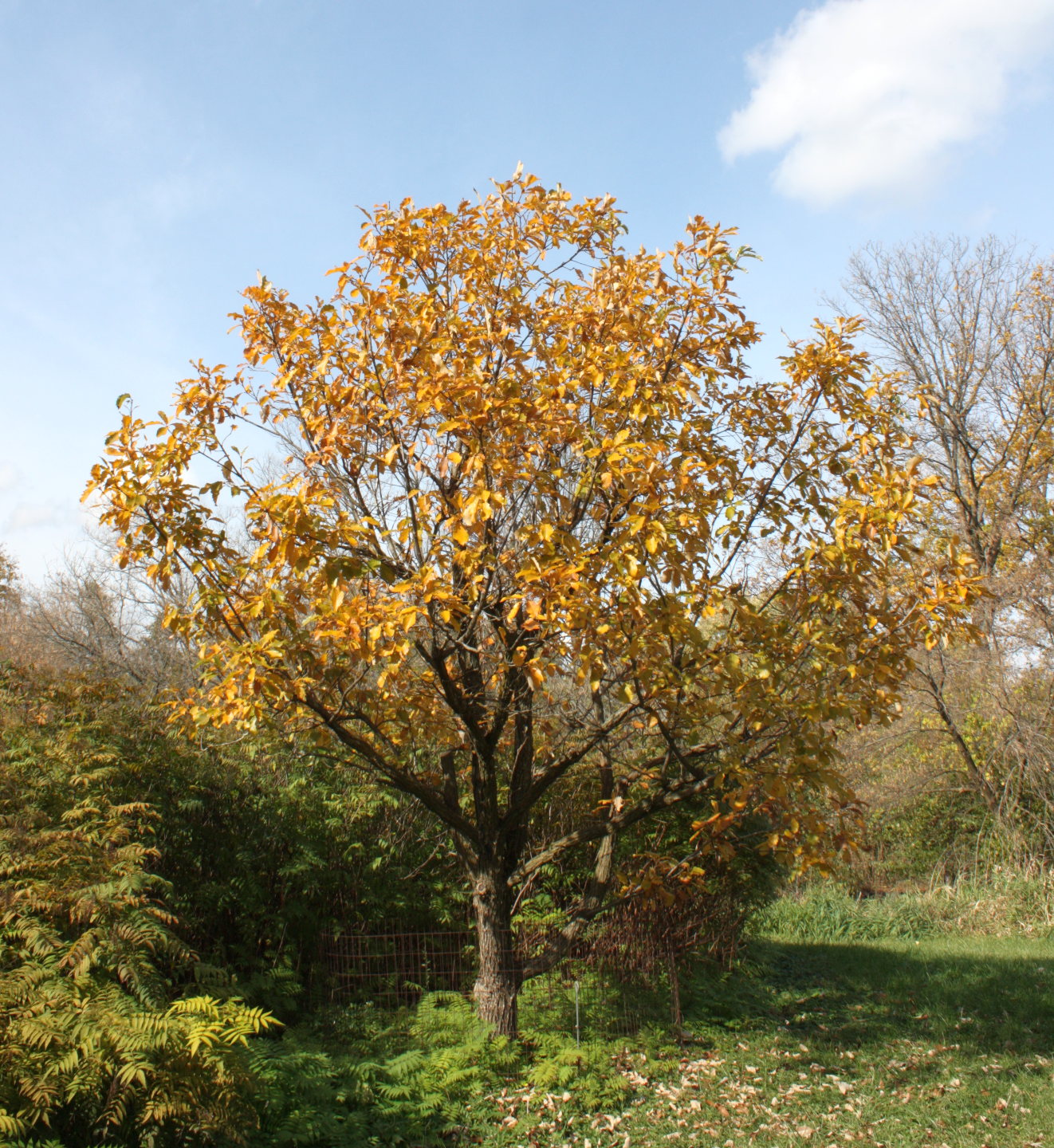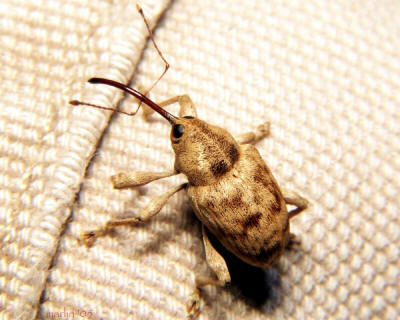Oriental White Oak – Quercus aliena
 Oriental White Oak, from seed, is 24 years old and about 15 feet tall
Oriental White Oak, from seed, is 24 years old and about 15 feet tall
Family Fagaceae – Beech, Chinkapin and Oak
Native to China, Korea, and Japan, this slow-growing oak grows to 30m. USDA zones 6-9
Oriental White Oak is easily grown in rich, loamy, well-drained soils in full sun. It’s one of the few oaks that tolerates alkaline soil and urban pollution, although young trees may be difficult to transplant and establish.
Ornamental Characteristics: Long, toothed leaves have a beautiful wavy margin and a whitish underside; showy, yellow fall color; branches grow mostly upright or horizontal and will not droop; bark is a bold, scaly gray. Acorns are one-half inches in length with a scaly cap. It may take 20 years to bear the first crop [2].

White oak also hosts various scale insects, gall-forming insects, and twig pruners, but most of these are of minor importance. White oak acorns are commonly attacked by insects, in some cases affecting half the total acorn crop. Weevils of the genera Curculio and Conotrachelus cause most acorn damage.
 Acorn Weevil Curculio |
There are about four hundred species in the oak genus (Quercus) worldwide. Oak trees are majestic beauties and symbols of strength in many cultures. The oak is the national tree of not only the United States, but of England and Germany as well. Several insects attack white oak trees. Economically, the most important are the wood borers. These may damage the wood of standing trees and cause log and lumber defects. White oak is attacked by several leaf eaters including the gypsy moth, orange-striped oakworm, variable oakleaf caterpillar, several oak leaf tiers and walking stick. The Cynipid wasps cause galls to develop on the leaves, in the acorn or on the cup. |
References
1. Quercus aliena, Morton Arboretum acc. 252-76*2, photos by Bruce Marlin
2. Mong-Huai Su, Sheng-Chieh Wu, Chang-Fu Hsieh, Sin-I Chen, and Kuoh-Cheng Yang, National Taiwan University Institutional Repository, “Rediscovery of Quercus aliena Blume (Fagaceae)”
3. eFloras.org, Flora of China, “Quercus aliena Blume, Mus. Bot. 1: 298. 1850”
Family Fagaceae – Beech, Chinkapin and Oak
Trees Index | Pine Family | Beech, Oak | Nut Trees | Birch Family | Magnolias
Tree Encyclopedia / North American Insects & Spiders is dedicated to providing family-friendly educational
resources for our friends around the world through large images and macro photographs of flora and fauna.

